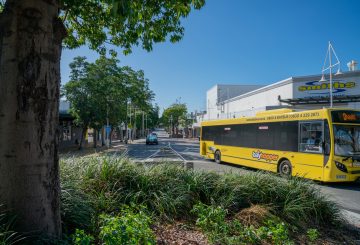Cập nhật Covid 19 Delta
- New Zealand sẽ tiếp tục lệnh đóng cửa cho đến thứ Ba
- Auckland và Northland ở lại mức 4 hạn chế lâu hơn
- Cấp độ 3 sẽ có ý nghĩa gì đối với bạn?
- New Zealand sẽ ở lại mức lại 4 cho đến thứ Ba
New Zealand sẽ ở lại cấp độ 4 cho đến thứ Ba
Thủ tướng Jacinda Ardern đã thông báo trong cuộc họp truyền thông lúc 3 giờ chiều rằng New Zealand sẽ vẫn ở trong điều kiện Cấp 4 cho đến 11:59 tối Thứ Ba, ngày 31 tháng 8. Bà ấy khuyên rằng chính phủ nên thực hiện một cách tiếp cận thận trọng bằng cách kéo dài thời hạn lệnh khóa theo cấp độ, có nghĩa là sẽ kết thúc vào đêm nay.
Ardern nói rằng bốn ngày tăng thêm sẽ cho phép các chuyên gia y tế phân tích một chu kỳ đầy đủ hai tuần dữ liệu và những thông tin khác.
Nếu mọi thứ diễn ra theo kế hoạch, hạn chế ở cấp độ 4 sẽ chấm dứt và hạn chế Cấp 3 sẽ được tất cả New Zealand thông qua, trừ Auckland và Northland.
Auckland và Northland ở lại mức độ 4 hạn chế lâu hơn
Dự đoán Auckland và Northland sẽ duy trì ở Cấp độ 4 trong hai tuần nữa.
Quyết định của chính phủ để giữ Northland ở Cấp độ 4 là do một trường hợp khả nghi đã được xác nhận ở Warkworth, một thị trấn cách Auckland 60 km về phía bắc.
Bảy mươi trường hợp mới đã được xác nhận vào ngày hôm nay, đưa tổng số trường hợp ở New Zealand lên 347
Mức 3 có ý nghĩa gì đối với bạn?
Thủ tướng nói: “Cấp độ ba cho phép chúng tôi trao cho các doanh nghiệp và những người khác nhiều quyền tự do hơn nhưng việc tiếp xúc với những người khác cần phải hạn chế.
“Chúng tôi muốn bạn hạn chế tiếp xúc càng nhiều càng tốt”, Ardern nói.
Bà cho biết các cửa hàng bán đồ ăn mang đi chỉ có thể hoạt động bằng phương pháp không tiếp xúc.
“Chúng tôi muốn bạn hạn chế tiếp xúc càng nhiều càng tốt.”
Các địa điểm công cộng vẫn đóng cửa. Các nhóm 10 người cho đám cưới, đám tang và tangi được phép.
Khẩu trang vẫn là thứ bắt buộc trên tất cả các phương tiện giao thông công cộng và bạn nên đeo khẩu trang ở những nơi công cộng nhất có thể. Bạn cũng phải tuân theo khoảng cách vật lý và cách nhau hai mét trong các cửa hàng bán lẻ và cách nhau một mét trong các môi trường được kiểm soát như trường học và nơi làm việc.
Ở Cấp độ 3, bạn có thể đi du lịch địa phương trong khu vực của mình, tuy nhiên việc đi đến khu vực khác bị hạn chế rất nhiều. Tuy nhiên, Bộ Kinh doanh, Đổi mới & Việc làm sẽ mở cửa nhận hồ sơ từ Chủ nhật cho những người cần được miễn trừ vượt qua ranh giới để làm việc.



























































